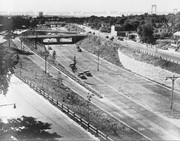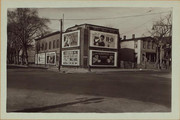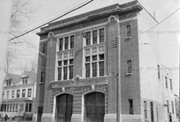It is interesting that company designations above apparatus doors probably matched apparatus placement as designed when firehouses were originally placed in service. But over many years with apparatus changes, unit relocations, building modifications and department reorganizations - company designations now randomly match initial designations above doors.
Most FDNY firehouses are 50 to 100 years old, or older. Many were designed for horse drawn apparatus and many had separate engine/truck quarters in the same firehouse. Many firehouses saw second sections and TCUs and required creative apparatus placement. Many firehouses have seen battalion chiefs, deputy chiefs, second pieces, spares and special units come and go. Firehouses have been remodeled. So it is understandable that apparatus placement changed from original design placement.
There is discretion but I have also wondered if there have been division or boro customs about engine/truck placement which influenced apparatus placement. Does apparatus placement follow any department traditions or policies? Or is it random? Or is it just practical based on current apparatus size and space available on the apparatus floor?












